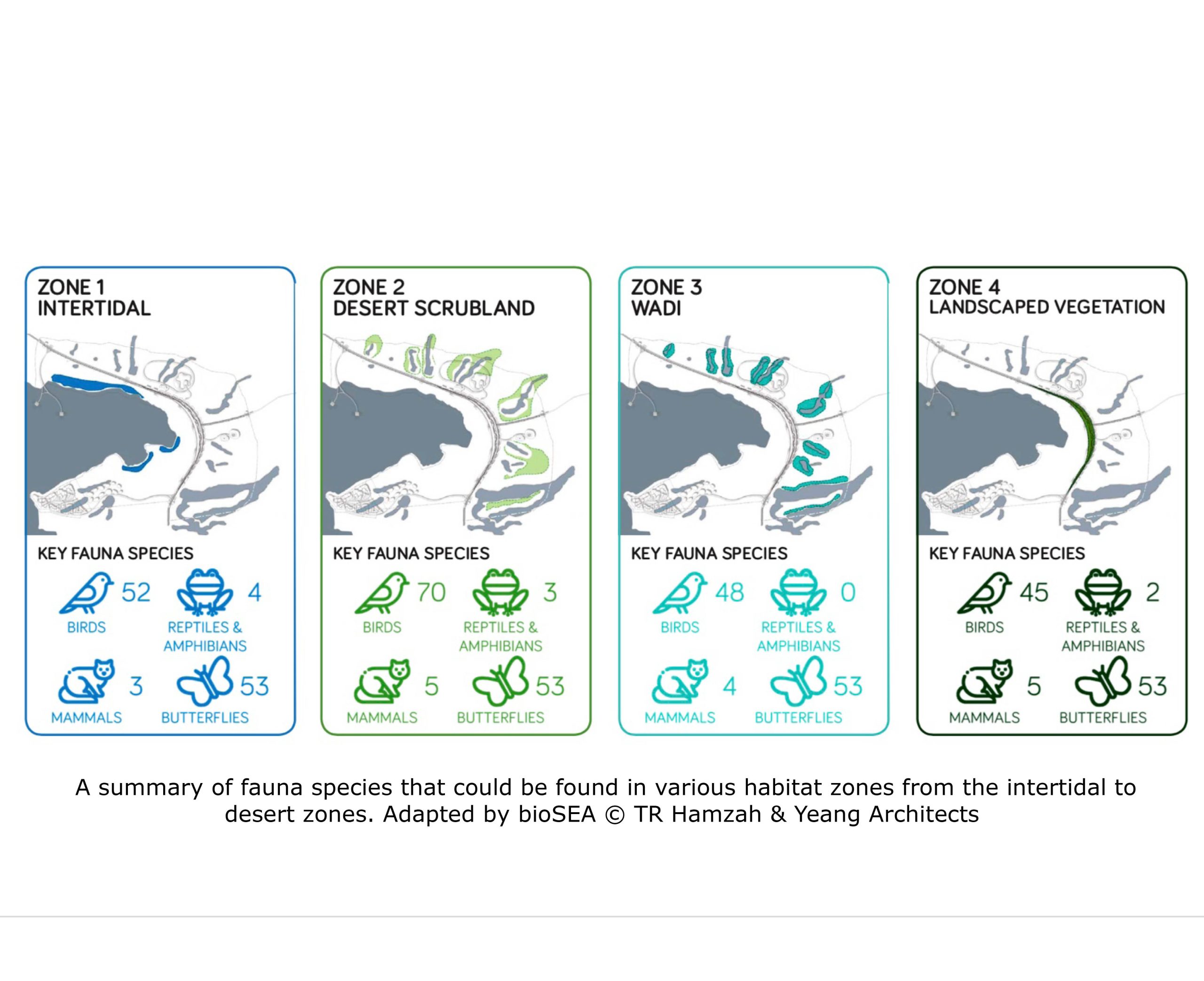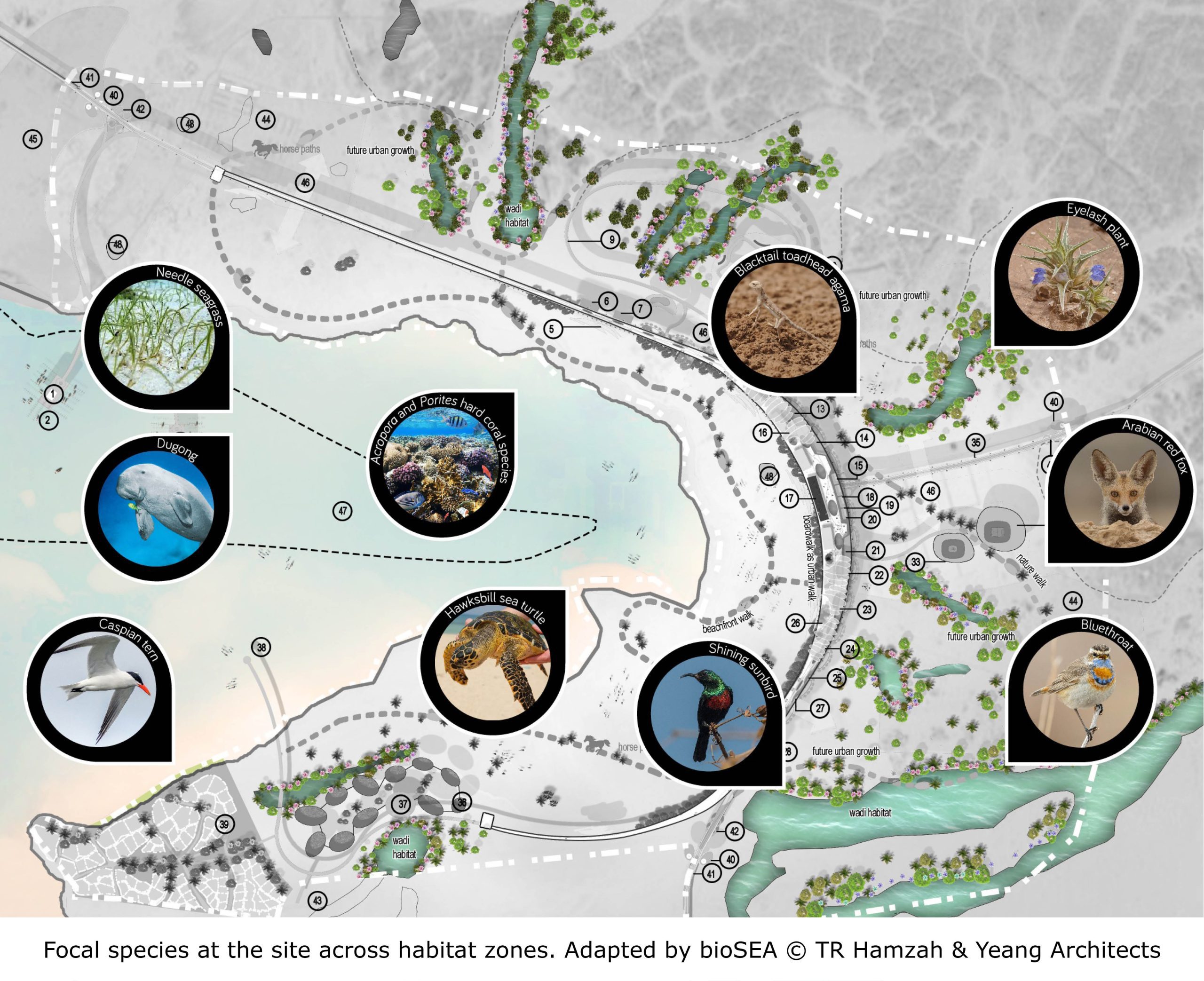-
Designer
TR Hamzah & Yeang Architects
-
Client
NEOM Company
-
Location
Saudi Arabia
-
Scale
City
-
Status
Unbuilt
-
Services
Ecological Placemaking
-
Use
Mixed-use
-
Year
2019
NEOM City Masterplan, Saudi Arabia



Project Summary
Working with TR Hamzah & Yeang Architects, we devised an ecological masterplan strategy for NEOM City, Saudi Arabia’s upcoming planned city. Nestled along an ecologically vital coast teeming with intricate coral reefs, seagrasses, and diverse marine life, the area also holds historical and cultural significance.
Our design introduces the concept of a “City in the Sky,” which aimed to preserve the abundant ecology and much of the original ground vegetation of place. Four primary habitat types (coastal, desert/scrub, wadis, landscaped vegetation) and several sub-habitat types (e.g., intertidal areas within the coastal habitat) were identified. We incorporated water bodies with naturalized banks (wadis) to create a biodiverse habitat. Elevated golf courses and boardwalks were proposed to maintain ecological connectivity between the inland wadis and coastal, seagrass, and coral reef environments. Simultaneously, we aimed to develop a high-tech, livable, culturally sensitive, and environmentally sustainable precinct.
We acknowledged the extensive coastline as a critical nesting site for globally endangered sea turtles, driving us to shift development away from the coast and towards the sky. The elevated boardwalk gracefully enveloped the wadis, granting visitors uninterrupted access to water while minimizing disturbances to the ground flora and fauna. We also enhanced the coastal and intertidal zones to attract globally significant migratory coastal and water birds.
To determine which faunal species to retain or attract, we constructed a biodiversity matrix correlating key species with various landscape types. Our approach considered ecological importance, conservation priority, flagship status, umbrella roles, and innate appeal. For its many merits, the masterplan was selected as a finalist in the design competition.
